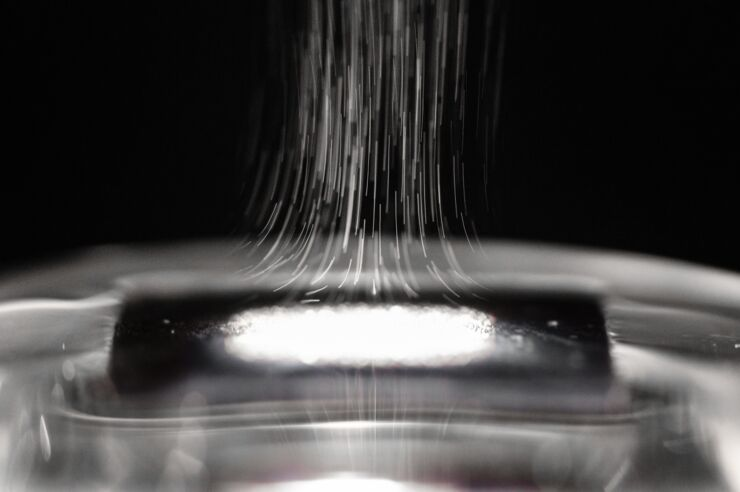Apr 21 2020
Researchers at the Laboratory of Organic Electronics of Linköping University have used natural and inexpensive materials such as cellulose to develop a highly efficient steam generator for the desalination and purification of water.
 The heat from the sun vaporizes the water, while salt and other materials remain behind. Image Credit: Thor Balkhed.
The heat from the sun vaporizes the water, while salt and other materials remain behind. Image Credit: Thor Balkhed.
Predictions have been made that in 2040, one-fourth of the children worldwide will live in areas that lack potable and clean water. The purification of wastewater and the desalination of seawater are two prospective techniques to mitigate this issue.
Linköping researchers have designed the eco-friendly and affordable steam generator to purify and desalinate water by using sunlight. The study findings have been reported in the Advanced Sustainable Systems journal.
The rate of steam production is 4-5 times higher than that of direct water evaporation, which means that we can purify more water.
Simone Fabiano, Associate Professor and Head of the Organic Nanoelectronics Group, Laboratory of Organic Electronics, Linköping University
Cellulose-Based
An Aerogel with a cellulose-based structure that is decorated with the organic conjugated polymer known as PEDOT:PSS has been used in the steam generator. The polymer has the capability of absorbing the energy from sunlight, quite significantly in the spectrum’s infrared part where the majority of the sun’s heat is conveyed. Thanks to the porous nanostructure of the aerogel, huge quantities of water can be absorbed into its pores.
A 2 mm layer of this material can absorb 99% of the energy in the sun’s spectrum.
Simone Fabiano, Associate Professor and Head of the Organic Nanoelectronics Group, Laboratory of Organic Electronics, Linköping University
Additionally, insulating and porous floating foam is positioned between the aerogel and the water, keeping the steam generator afloat. Sun’s heat vaporizes the water, while salt and other materials are left back.
Durable Material
The aerogel is durable and can be cleaned in, for example, salt water such that it can be used again immediately. This can be repeated many times. The water that passes through the system by evaporation becomes very high-quality drinking water.
Tero-Petri Ruoko, Study Author and Postdoc, Laboratory of Organic Electronics, Linköping University
Simone noted, “What’s particularly nice about this system is that all the materials are eco-friendly—we use nanocellulose and a polymer that has a very low impact on the environmental and people. We also use very small amounts material: the aerogel is made up of 90% air. We hope and believe that our results can help the millions of people who don’t have access to clean water.”
Shaobo Han has designed the aerogel within the framework of his doctoral studies in the Laboratory of Organic Electronics, under the guidance of Professor Xavier Crispin.
In 2019, the outcomes of the study were reported in the Advanced Science journal. After receiving his doctoral degree, Shaobo Han returned to China to continue his studies in this field.
The study was financially supported by the Knut and Alice Wallenberg Foundation, the Tail of the Sun project, the Swedish Research Council, and the strategic research area Advanced Functional Materials at Linköping University.